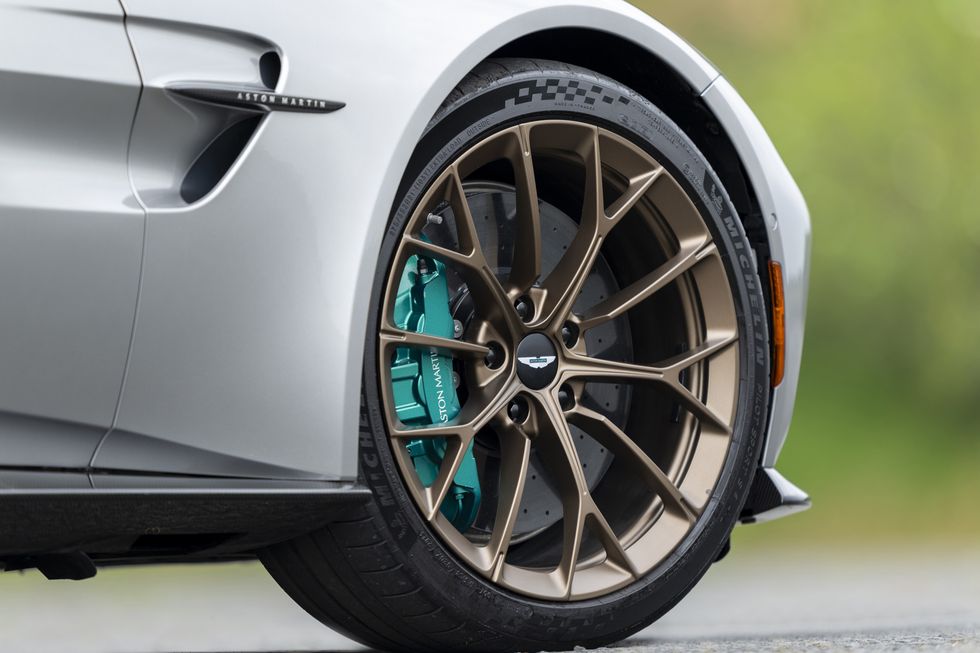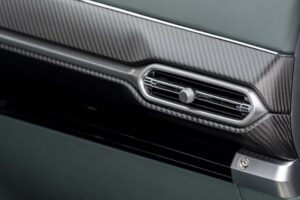2025 Aston Martin Vantage Review

If Aston Martin were a dish, it would certainly be something complex and layered—perhaps a meticulously crafted beef Wellington, where every component from the duxelles to the puff pastry must align perfectly to achieve the desired outcome. Like the revered dish, Aston Martin’s recipe for success has required careful handling and adaptation, particularly in recent years.
2025 Aston Martin Vantage Review









Revitalizing a Legacy with Fresh Enthusiasm
At the media launch in southern Spain, the new Aston Martin Vantage was introduced with a tagline that might have seemed corny to some but rings true for those who got behind the wheel: “engineered for real drivers.” This is not just another slick marketing phrase; it represents a significant pivot in the driving dynamics of Aston Martin’s sports cars.
From Overreach to Overachievement
Historically, Aston Martin sports cars have been praised for their ability to perform well on a track and provide an enjoyable ride. However, they were not always considered the pinnacle of “fun” or “lively” driving. The new Vantage changes this perception dramatically. It is not just fun; it’s thrilling—a marked departure from some of its predecessors.
Technical Tweaks for a Superior Drive





Aston Martin claims a reduction in the understeer gradient by 12 percent. To put it simply, this technical jargon means the car’s chassis has been adjusted to be more neutral. For the driver, this translates to increased control and the ability to guide the car using various inputs—whether it’s the steering wheel, the brakes, or even the throttle. This capability is enhanced by the specialized 21-inch Michelin Pilot Sport 5S tires, which also feature on the newly launched DB12.
In everyday driving conditions, the Vantage’s sophisticated nine-position traction-control system offers a nuanced driving experience, allowing for a custom level of grip and slip without ever needing to fully disengage the electronic stability control (ESC). This setup ensures that traction is plentiful and the assistance systems
Emphasizing Driver Engagement and Performance
Aston Martin’s revamped approach with the Vantage is a testament to their commitment to meet the expectations of serious drivers who value both performance and driving pleasure. The changes may not be revolutionary on paper, but they are evolutionary in how they transform the driving experience. The Vantage is now not just a car that looks good on a racetrack but one that feels right in the hands of a real driver, turning even a clichéd tagline into a credible claim of superior engineering and thrilling performance.
Aston Martin Vantage 2025: A Testament to Traditional Thrills
A Leap Back to Basics
In a time when many sports cars are laden with technological interventions to enhance driving dynamics, the new Aston Martin Vantage 2025 takes a decidedly different approach. This car is stripped of many modern mechanical complexities like air springs, active anti-roll bars, and rear-wheel steering. Aston Martin has chosen to eschew these in favor of a more traditional sports car experience, where nothing masks the car’s true character.
The Pure Pleasure of Driving
The Vantage features a vacuum brake booster, heralded for providing one of the most honest pedal feels in recent memory—no “fake by-wire nonsense” as some might call it. While it does include some electronic aids, they are minimal, allowing the car’s mechanical prowess to shine through, something many purists will appreciate. This move by Aston Martin to maintain a connection with traditional driving dynamics is commendable and, frankly, refreshing.
Impressive Power Without the Wait



Under the hood, the Vantage boasts a formidable Mercedes-based 656-hp V-8 engine—a significant jump from its predecessor’s 503 horsepower. This increase in power comes from revised heads, camshafts, and larger turbos, yet remarkably, there’s minimal turbo lag. The power delivery feels natural, ramping up smoothly to a robust torque plateau of 590 lb-ft. Aston Martin’s claim of a 0-60 mph time of 3.4 seconds may even be a tad conservative; the actual performance could surprise us further, potentially dipping into the high two-second range.
Luxury Meets Performance in a Competitive Market






2025 Aston Martin Vantage Price: Navigating the premium-luxury-sports-car sector is no easy task, especially with a starting price of $194,400. The Vantage finds itself competing against the likes of Porsche and Mercedes for performance aficionados, and Bentley and Maserati for those leaning towards luxury. Despite this stiff competition, the Vantage holds its own with an interior laden with premium materials and distinct touches like an inboard seat control system, which has been refined to avoid accidental adjustments.
2025 Aston Martin Vantage Interior















The interior of the Vantage reflects a meticulous commitment to luxury, outfitted with top-tier materials that elevate the cabin experience. While there’s a nod to its technical partnership through some Mercedes switchgear, Aston Martin ensures that its identity is front and center. The dual 10.3-inch displays for the touchscreen and instrument cluster boast bespoke software, di
Transmission: A Nostalgic Miss but a Modern Hit
For purists, the absence of a manual transmission in the new Vantage might seem like a missed opportunity to fully align with the “engineered for real drivers” ethos. However, the installed ZF-sourced eight-speed transaxle, complete with a carbon-fiber prop shaft and an electronically controlled limited-slip differential, promises performance that is hard to critique. This setup offers a blend of responsiveness
While it’s true that a manual transmission would have added a layer of allure for enthusiasts keen on a more hands-on driving experience, Aston Martin hints at future possibilities with limited-run models like the 110-unit Valour, which will feature manual gearboxes. This approach suggests a strategic acknowledgment of the manual’s niche appeal, which may not translate across the broader market but will satisfy those yearning for a more tactile connection to their car.










